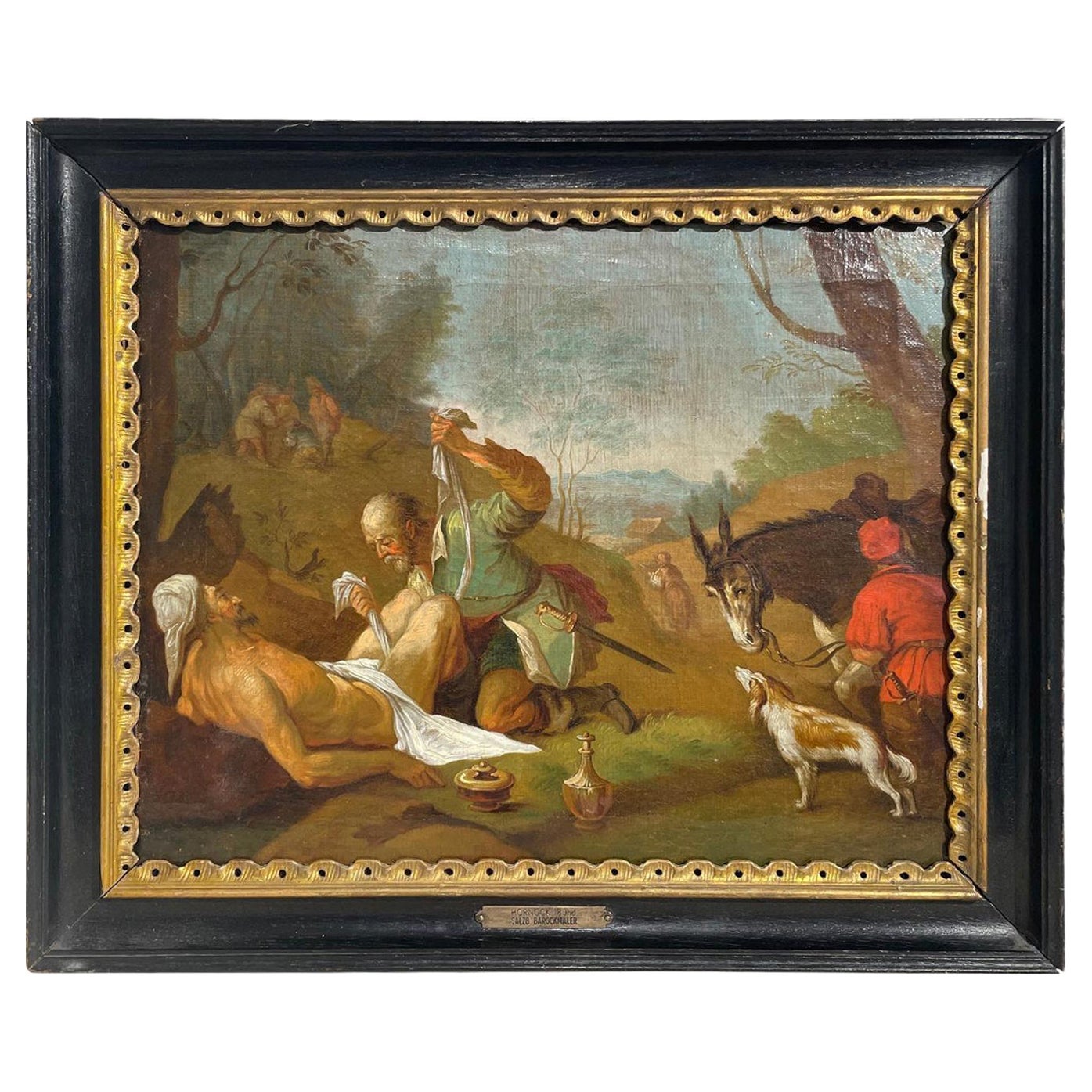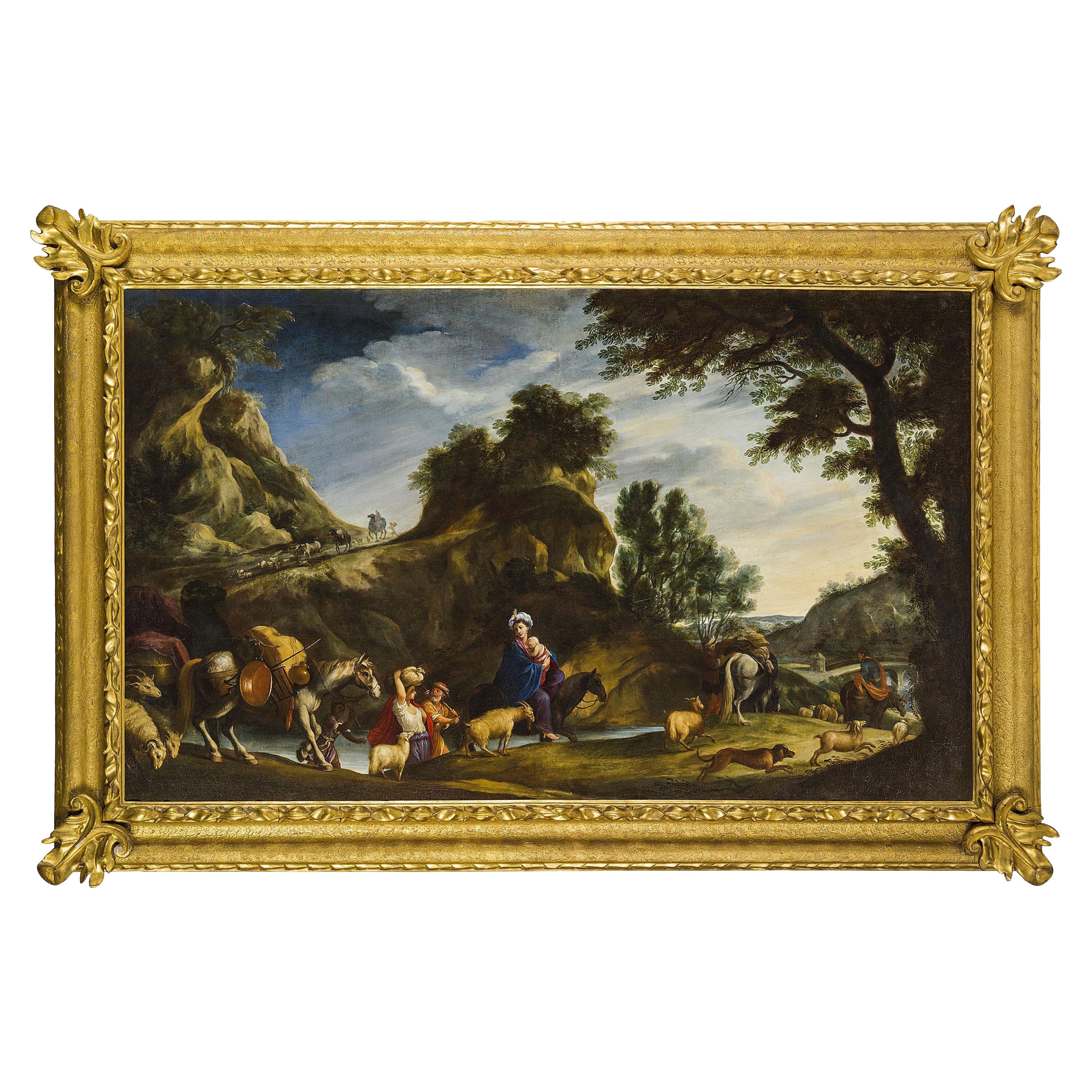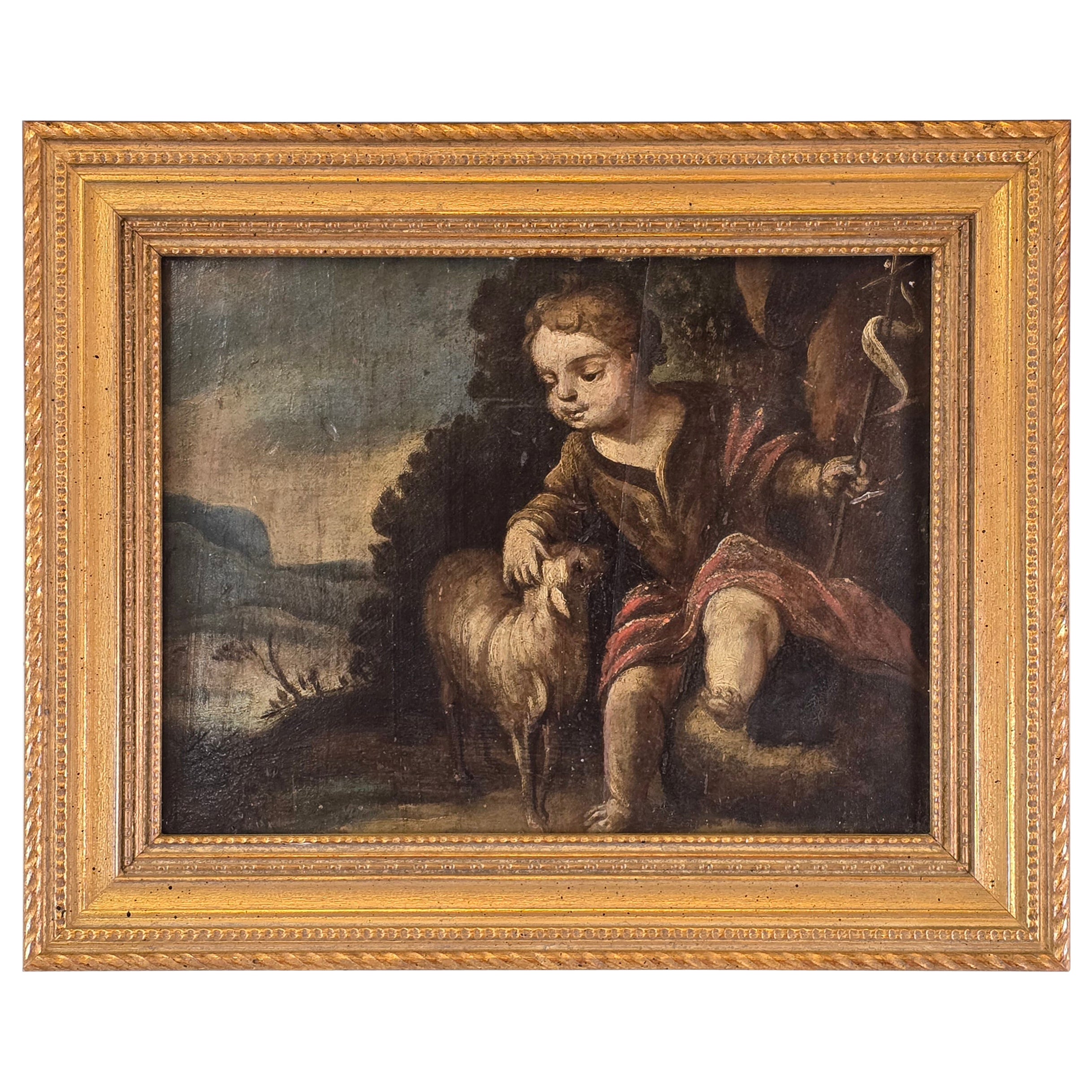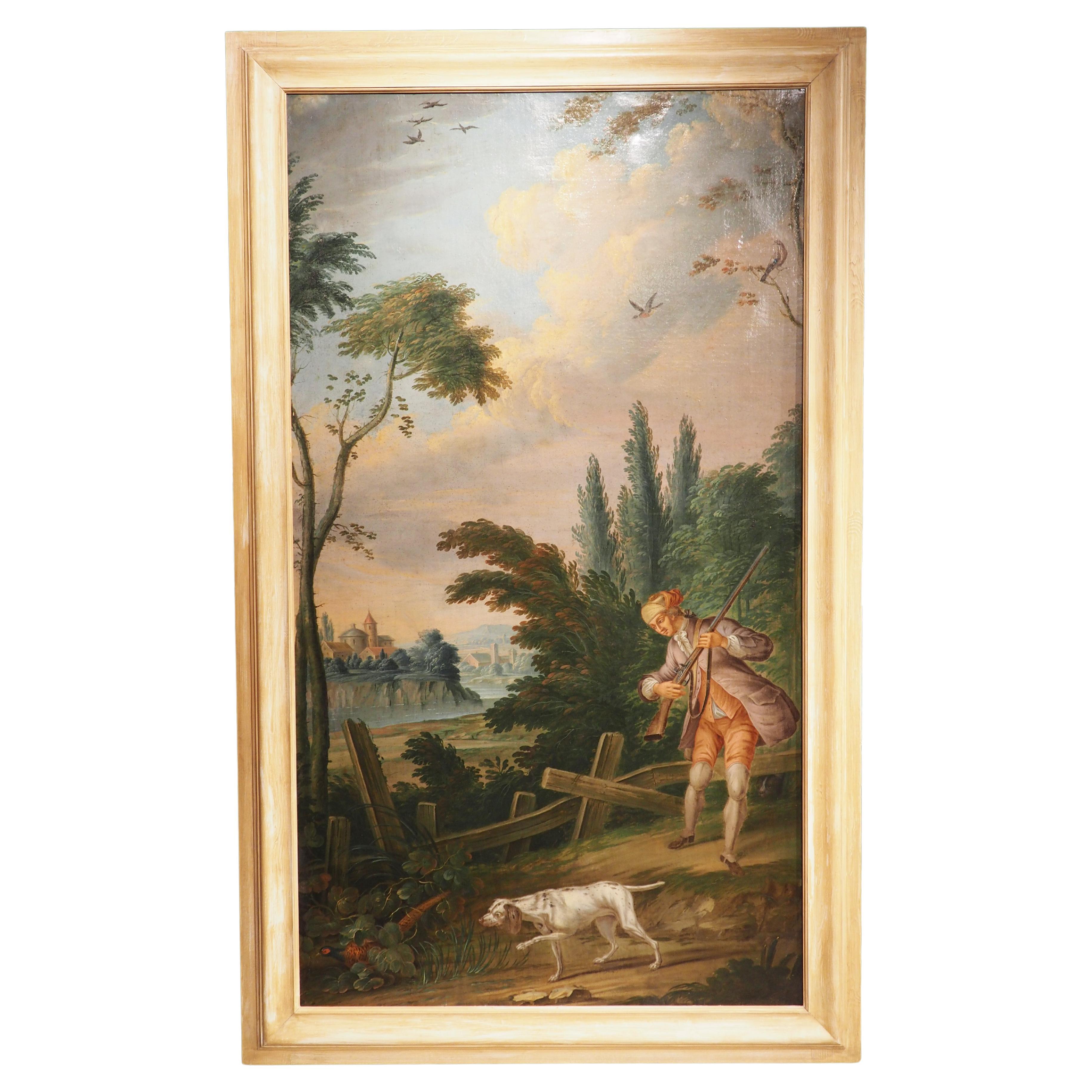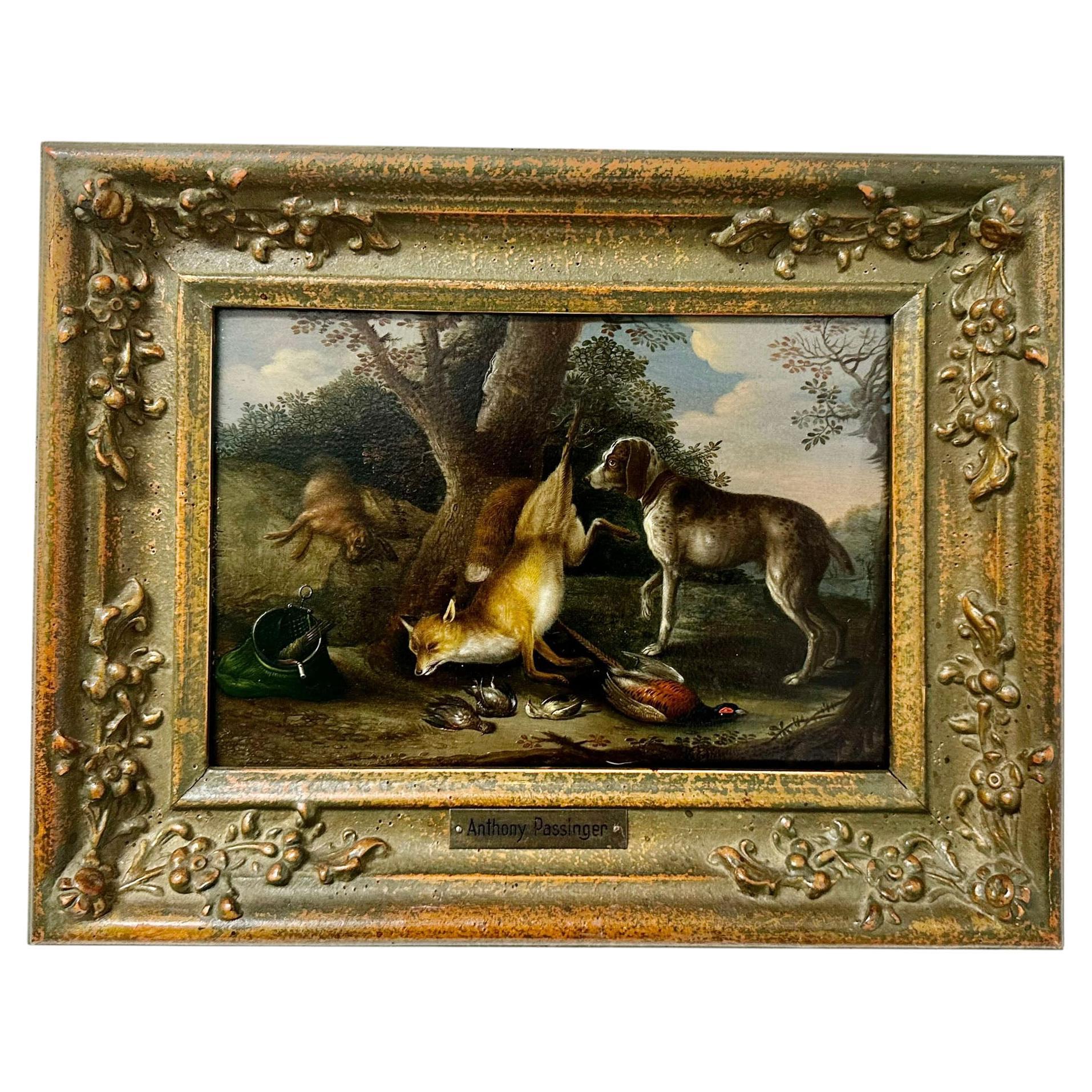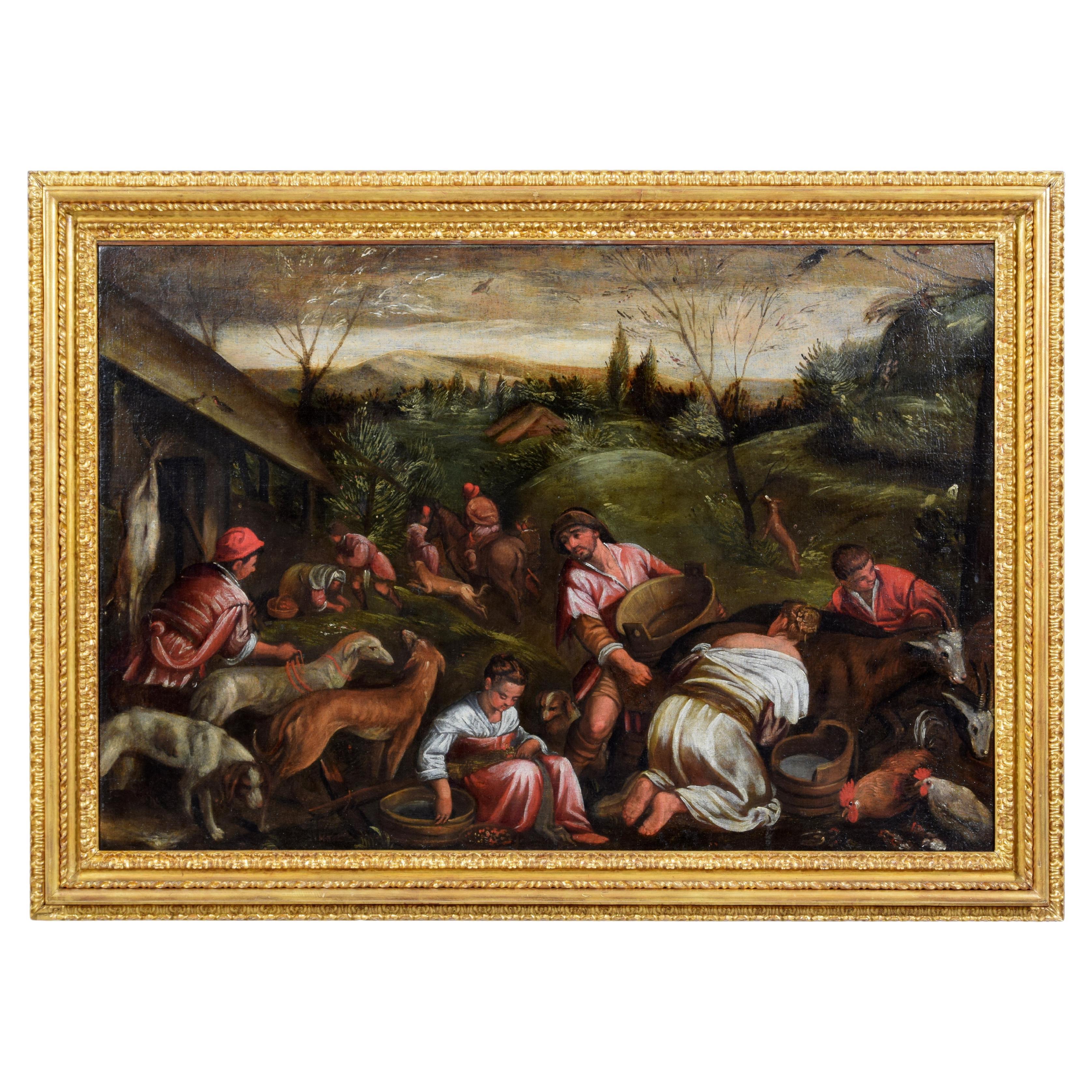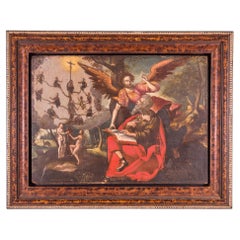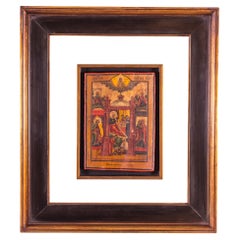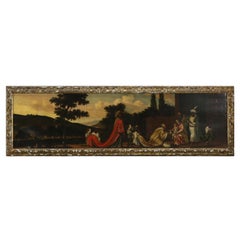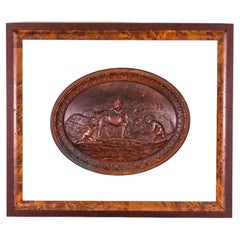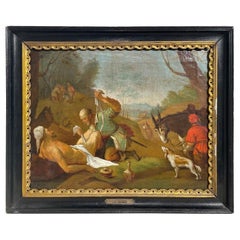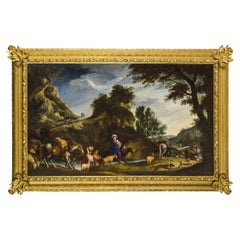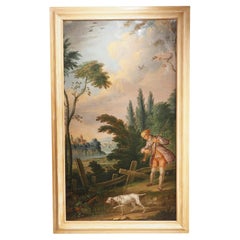Items Similar to The Vision of Saint Hubertus, Late 17th Century
Want more images or videos?
Request additional images or videos from the seller
1 of 6
The Vision of Saint Hubertus, Late 17th Century
$14,000
$17,50020% Off
£10,703.75
£13,379.6820% Off
€12,328.55
€15,410.6920% Off
CA$19,618.29
CA$24,522.8720% Off
A$21,901.98
A$27,377.4720% Off
CHF 11,476.31
CHF 14,345.3820% Off
MX$268,101.72
MX$335,127.1520% Off
NOK 145,749.22
NOK 182,186.5220% Off
SEK 137,423.01
SEK 171,778.7620% Off
DKK 92,009.25
DKK 115,011.5720% Off
Shipping
Retrieving quote...The 1stDibs Promise:
Authenticity Guarantee,
Money-Back Guarantee,
24-Hour Cancellation
About the Item
Late 17th century oil on joined wood panel interpretation of The Vision of Saint Hubertus by Albrecht Durer. It was painted in 1501 and became a very popular image, as it was one of his first engravings and easily spread all over the world. The artist initials are located on the bottom center of the piece, the same location where Durer became recognized for signing. It has been mounted on a Lucite panel and framed with a modern hand-finished and distressed walnut frame.
- Dimensions:Height: 55 in (139.7 cm)Width: 41 in (104.14 cm)Depth: 2 in (5.08 cm)
- Style:Baroque (Of the Period)
- Materials and Techniques:
- Place of Origin:
- Period:
- Date of Manufacture:17th Century
- Condition:Wear consistent with age and use. Minor losses. Minor structural damages. Minor fading.
- Seller Location:North Miami, FL
- Reference Number:1stDibs: LU6132226827212
About the Seller
3.7
Vetted Professional Seller
Every seller passes strict standards for authenticity and reliability
Established in 2000
1stDibs seller since 2021
22 sales on 1stDibs
Typical response time: 2 hours
- ShippingRetrieving quote...Shipping from: North Miami, FL
- Return Policy
Authenticity Guarantee
In the unlikely event there’s an issue with an item’s authenticity, contact us within 1 year for a full refund. DetailsMoney-Back Guarantee
If your item is not as described, is damaged in transit, or does not arrive, contact us within 7 days for a full refund. Details24-Hour Cancellation
You have a 24-hour grace period in which to reconsider your purchase, with no questions asked.Vetted Professional Sellers
Our world-class sellers must adhere to strict standards for service and quality, maintaining the integrity of our listings.Price-Match Guarantee
If you find that a seller listed the same item for a lower price elsewhere, we’ll match it.Trusted Global Delivery
Our best-in-class carrier network provides specialized shipping options worldwide, including custom delivery.More From This Seller
View AllEvangelist and Apostle Saint Luke, 1602, Oil Painting
Located in North Miami, FL
Early 17th century German oil painting on chamfered oak panel by Maller Michael Nagel signed in gilt on hem of cloak. The date 1602 is on the edge of the ...
Category
Mid-20th Century German Baroque Paintings
Materials
Canvas, Wood, Paint, Oak
Nativity of the Mother of God, 17th Century
Located in North Miami, FL
Late 17th Century Russian Orthodox Icon of the Nativity of the Mother of God painted over gold leaf and gesso laid on a wooden board. It has been framed with a gold gilded museum mou...
Category
Antique 17th Century Russian Baroque Wall-mounted Sculptures
Materials
Gold Leaf
$7,600 Sale Price
20% Off
17th Century Italian Flemish Oil on Canvas Painting of Adoration of the Magi
Located in North Miami, FL
17th Century Italian Flemish oil on canvas painting depicting the Adoration of the Magi. Early Flemish painting was contemporary to the development of the early Renaissance in Italy. In the middle of the 15th century Italy...
Category
Antique 17th Century Italian Baroque Paintings
Materials
Wood, Giltwood, Paint
$26,663 Sale Price
24% Off
Scene of Cherubs Farming, 18th Century
Located in North Miami, FL
18th century French carved-wood panel of a scene of with Cherubs farming. The piece is mounted on a Lucite panel and framed with a double walnut molding...
Category
Antique 18th Century French Baroque Wall-mounted Sculptures
Materials
Wood, Walnut
$6,800 Sale Price
20% Off
“Abundantia”, Oil on Panel, Attributed to Angelica 'Maria Anna' Kauffman
By Angelica Kauffmann
Located in North Miami, FL
Behold "Abundantia," an oil masterpiece on panel, often attributed to the accomplished artist Angelica (Maria Anna) Kauffman (Italian/English, 1741-1807). This remarkable work of art...
Category
Antique 18th Century Italian Paintings
Materials
Wood, Paint
$12,565 Sale Price
30% Off
18th Century French Pair of Oils on Gold Leaf Panels
Located in North Miami, FL
18th century French pair of oils on gold leaf panels. One is depicting an angel playing the violin, and the other one is holding the music book.
Category
Antique 18th Century French Baroque Paintings
Materials
Gold Leaf
You May Also Like
18th Century Austrian Baroque Oil on Canvas Painting by Franz Xaver Hornöck
By Franz Xaver Hornöck
Located in West Palm Beach, FL
A light-brown, green antique Austrian Baroque oil on canvas painting by Franz Xaver Hornöck in a hand crafted original black, partly gilded wooden frame, in good condition. The vinta...
Category
Antique 18th Century Austrian Baroque Decorative Art
Materials
Canvas, Wood
17th Century, Italian Painting by Pier Francesco Cittadini, Jacob and his Family
Located in IT
Pier Francesco Cittadini (Milan, 1616-Bologna, 1681)
"Jacob and his family go to Egypt"
Oil on canvas, cm 109 x 190 (canvas only)
The valuable painting, made in oil on canvas, depicts Jacob and his family go to Egypt and we believe it can be, given the high quality painting, autograph work of Italian Pier Francesco Cittadini (Italy Milan, 1616 - Bologna, 1681) made after 1647. The work, in excellent condition is accompanied by a coeval frame in wood finely carved and golden.
The scene depicted, which was confused with the Flight to Egypt in the past years, is instead identified with the biblical episode of Jacob’s journey. In the foreground, reading the painting from left to right, we see a caravan composed of animals, including donkeys, dromedaries, goats, dogs and horses and people, women, men and slaves, who carry on their journey along the banks of a river, following a path that to the right, would seem to lead to the through of a bridge. In addition to the watercourse is described an environment characterized by large rocks and impervious come far to cover the entire verticality of the canvas. On the left, in the distance, we see the tail of the caravan that runs along the steep path. Large trees enliven and harmonize the environment, as well as white and grey clouds characterize the predominantly clear sky and illuminated on the right by sunlight.
The story is told in the Bible, Book of Genesis, 30, 25, passage in which is described the flight of Jacob from Haran after the contrasts with Laban, father of his wife Rachel. Jacob is the third great patriarch of the Bible. From his descendants originate the twelve generations of the people of Israel. He is the son of Isaac and Rebekah, who led him to flee from the wrath of Esau to Haran to seek refuge from his brother, Laban. At his uncle’s house Jacob met his daughter Rachel. As soon as he saw his cousin, Jacob was taken. Jacob will stay seven years in the service of Laban to marry his beloved Rachel. But Laban, with a deception, will give him in marriage first Lia, the least beautiful eldest daughter, and only after another seven years the splendid Rachel. From his first wife he will have several children, while Rachel will give birth to the beloved son, Joseph, who will become viceroy of Egypt.
After years of service, Jacob asked to be paid with every dark-coloured garment among the sheep and every spotted and dotted garment among the goats. Laban accepted and sent away from his sons all the leaders of that kind. So Jacob took fresh branches of poplar, almond and plane tree, and flayed them, and put them in the troughs. The optical suggestion induced the goats and the sheep to conceive and give birth to dark, striped and dotted garments. He also ensured that all the strongest and healthiest leaders of the flock of Laban would drink near the barked branches, thus assuring a genetic superiority to his part of the flock. His flocks grew numerous and strong and he became richer than his relative, arousing envy. It was clear that Laban would not respect him much longer. At the suggestion of the Lord, Jacob decided to return to Canaan. Trying to avoid any possible dispute, he left with his family while Laban was absent for shearing sheep. But when, three days later, his uncle returned home, he became angry, feeling offended because Jacob had gone secretly and had not allowed him to greet his daughters and grandchildren. In addition, his teraphim, statuettes, or idols, which depicted the family deities, had disappeared. After 7 days of pursuit, Laban and his men reached Jacob’s group on Mount Gilead, in the mountainous region west of the Euphrates River, where his uncle and grandson had a stormy conversation. The younger man was outraged at being accused of stealing idols and told Labano to rummage through his family’s tents at will. Neither of them could know or even imagine that it was Rachel who took the idols and hid them in the saddle of the camel. During the search, she sat down firmly on the saddle, apologizing for not being able to get up, «because I usually have what happens to women» (Gen 31:35). So the loot wasn’t discovered.
The author of this work was inspired by the composition of an engraving by Stefano Della Bella (1610-1664) of circa 1647. The engraving by Stefano della Bella bears the title "Iacob sur ses vieux jours quitte sans fascherie pour voir son filz Ioseph, sa terre et sa patrie" and is signed on the bottom left "Stef. of the Beautiful In. et fe." while on the right it is declared "Cum privil. Regis", that is with license of the king.
Stefano Della Bella (Italy - Florence, May 18, 1610-Florence, July 12, 1664) was born in a family of painters, sculptors and goldsmiths and was left early orphan of his father sculptor, he dedicated himself first to the art of goldsmith at the school of Giovanni Benedetto Castiglione and Gasparo Mola, then turning his attention to drawing and engraving. He soon began drawing figures and copying the etchings of Jacques Callot, which inspired his early works. Under the protection of the Medici, in particular of Don Lorenzo, cadet son of Grand Duke Ferdinand I, Della Bella has the opportunity to make study trips to Rome, where he stayed from 1633-1636; In Rome he met French engravers and publishers of prints such as Israël Henriet and François Langlois, who influenced his decision to move to Paris in 1639, four years after the death of Callot. In Paris he soon reached, thanks to the engravings commissioned by Cardinal Richelieu, the success also worldly; he frequented courtiers, theatre artists and writers, while refusing too oppressive honors. In 1646-1647 he continued his travels in the Netherlands to Amsterdam, Antwerp and Dordrecht. He returned to Florence in 1650 and resumed working under the protection of the Medici court, working for his patrons. In 1656 he became a member of the Academy of Apatists.
The painting object of this study is reasonably attributable to Pier Francesco Cittadini, or Pierfrancesco Cittadini, called the Milanese or the Franceschino (Italy - Milan, 1616-Bologna, 1681) as some exemplary stylistic comparisons proposed to follow can prove.
Pier Francesco Cittadini was an Italian baroque painter, mainly active in Bologna.
His artistic training first took place with the painter Daniele Crespi...
Category
Antique Mid-17th Century European Baroque Paintings
Materials
Canvas, Giltwood
17th Century French School Christ as Shepherd
Located in Kilmarnock, VA
A beautifully rendered 17th-century oil painting on panel from the French school, depicting Christ as the infant shepherd. The composition features muted, harmonious colors and delic...
Category
Antique 17th Century French Louis XIV Paintings
Materials
Wood, Paint
Large 18th Century French Oil on Canvas Painting depicting a Hunt Scene
Located in Dallas, TX
This large (96 3/4 inches high) oil on canvas painting depicts a man and his dog on a hunt in the French countryside. A hunter dressed in red and tan with a mauve overcoat can be seen following behind a white retriever...
Category
Antique 18th Century French Paintings
Materials
Canvas, Wood, Paint
19th Century German Oil Painting
Located in Tampa, FL
Anton Passinger was an Austrian artist born in 1825. He died in 1900. The name is anglicized on the brass plaque, and it’s signed with his German signature on the back. The painting ...
Category
Antique 1890s German Paintings
Materials
Paint
17th Century, Italian painting Allegory of the Spring Follower of Jacopo Bassano
By Jacopo Bassano
Located in IT
Follower of Jacopo Da Ponte, called Jacopo Bassano (Bassano del Grappa, circa 1510 - Bassano del Grappa, 13 February 1592), 17th century
Allegory of the Spring
Measures: With frame: ...
Category
Antique Late 17th Century Italian Baroque Paintings
Materials
Canvas
More Ways To Browse
Vintage Vanguard Lee Reynolds
Weinstein Gallery
Wyatt Earp
Xavier Wurth
A Rangel Hidalgo Painting
Adolf Menzel
Albert Namatjira
Albert Radoczy
Alessandro La Volpe
Alessandro Magnasco
Alexander Canedo
Alexander Julian
Alfonse Borysewicz
Amado Pena
Andre Pailler
Anthony Barham
Anthony Brandrett
Antique Furniture Fresno
